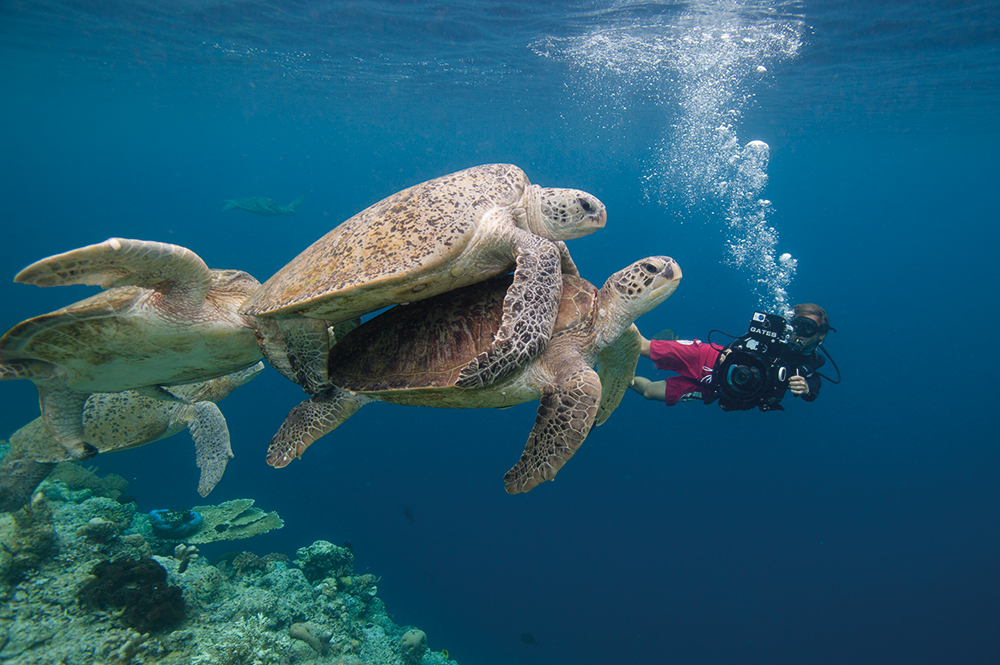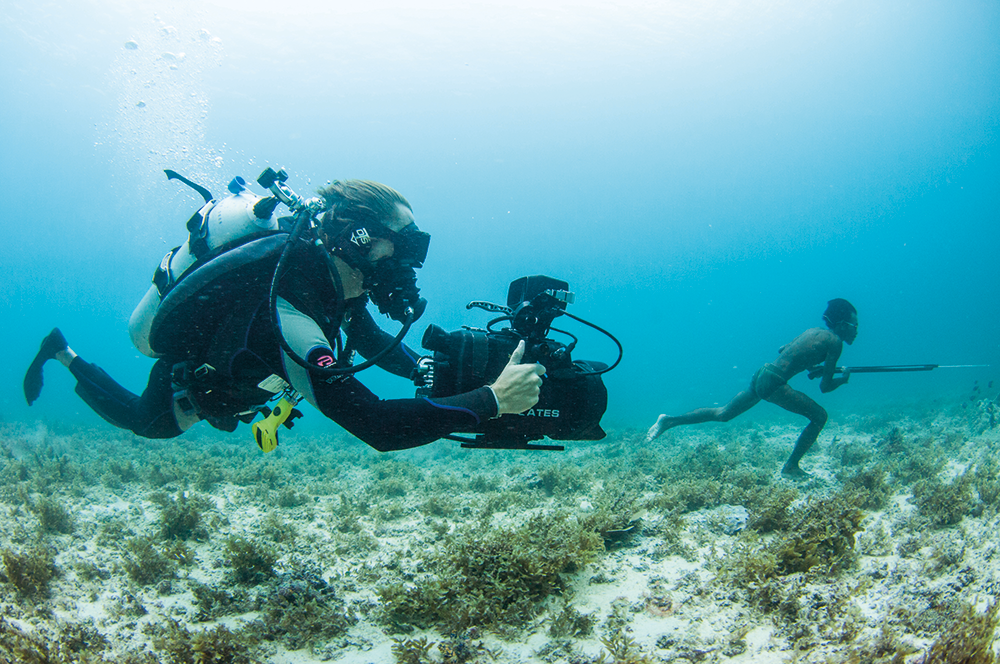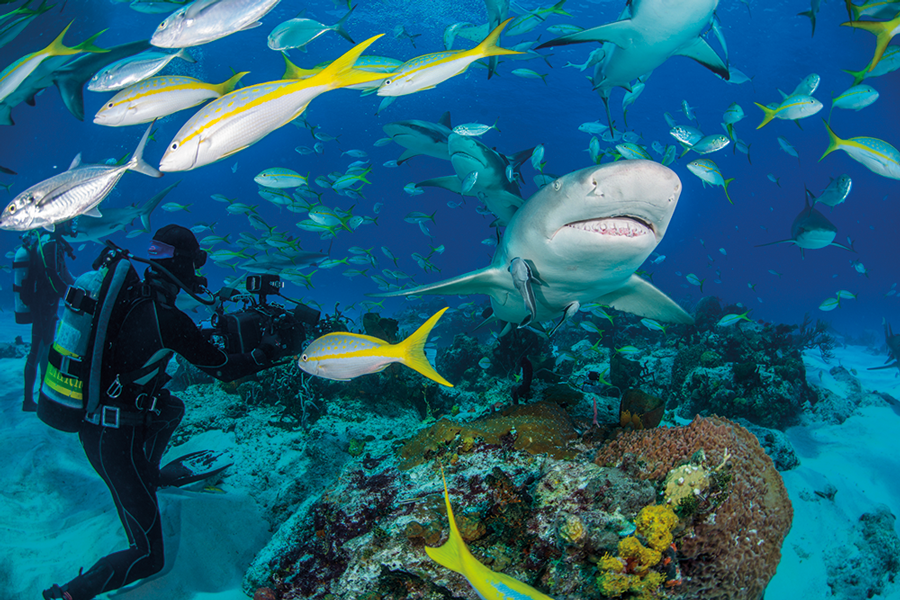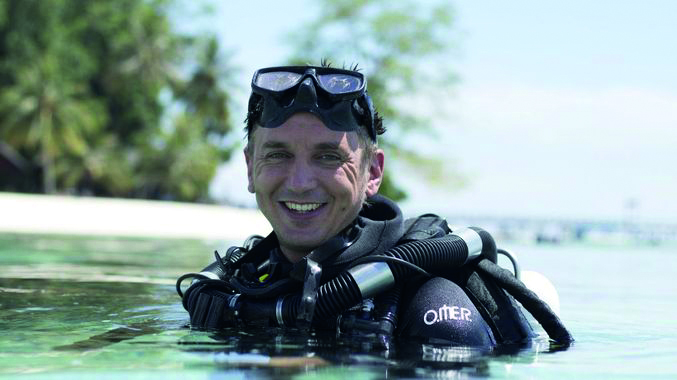The astounding images we see on marine nature documentaries such as the BBC’s Blue Planet II come to us courtesy of some of the most innovative cameramen in the business. Skilled divers like Malaysia-based Roger Munns.
It’s not the sharks he’s so worried about. Nor the jellyfish. Not even the stingrays. For underwater cameraman Roger Munns, the greatest risk of all is himself.
“There have been myriad moments when I’ve come close to doing myself a very nasty injury or worse,” says this 43-year-old who worked on the latest BBC nature series Blue Planet II. “It’s almost always my fault.”
Once, while filming off the Sri Lankan coast, Munns saw the fin on one foot sliced clean off by the propeller of an outboard motor. “It narrowly missed cutting my toes off by a matter of millimetres,” he remembers with a shudder.
The marine animals are often unfriendly, too. While filming last year’s Blue Planet II, for which he captured ten of the many amazing sequences, Munns was stung by a stonefish, one of the most venomous creatures in the sea. The culprit had buried itself beneath the sand, and he inadvertently placed his hand on its dorsal fin, causing it to inject him with venom. “That was absolute, torturous agony,” he says. “I’ve worn gloves under water ever since.”
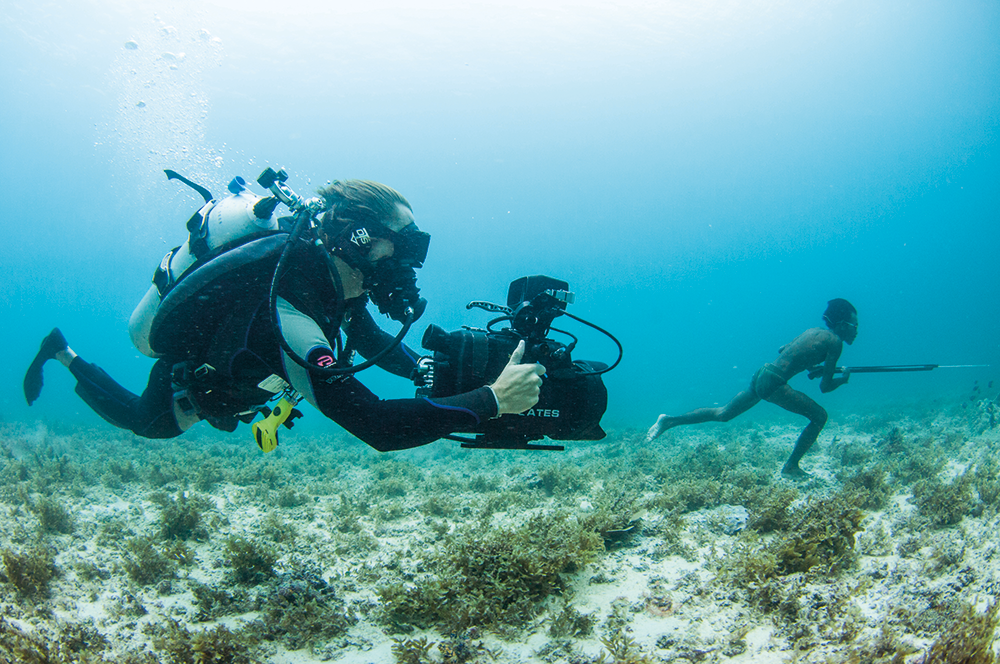
Above: Filming a spearfisherman walking on the sea bed near Mabul Island, Malaysia. Photo by Christian Loader / scubazoo.com
Most of the time, though, Munns keeps the wildlife at a safe distance, with his camera between him and his subjects. He has witnessed some sublime submarine moments during his working life. One which stands out was in 2008, off Tonga, in Polynesia, during a shoot for another BBC series called Life.
“I had a lovely two-hour encounter with a young humpback whale calf. It was incredibly inquisitive and friendly. It would come and nudge me, and spin around in front of me, doing loop-the-loops. It was like playing with a two-tonne puppy dog – an experience I’ll never forget.”
Film shoots such as this, in the open ocean, can be challenging, both physically and mentally. One of Munns’ jobs on Blue Planet II, which the producers called “the boiling sea phenomenon”, involved filming a mass feeding event in the Pacific Ocean. “Anecdotal evidence suggested the ocean would come alive in a writhing, tumultuous mass of lantern fish,” Munns explains. “Apparently it would be so violent that, from the surface or the air above, it would seem as if the sea was boiling.”


